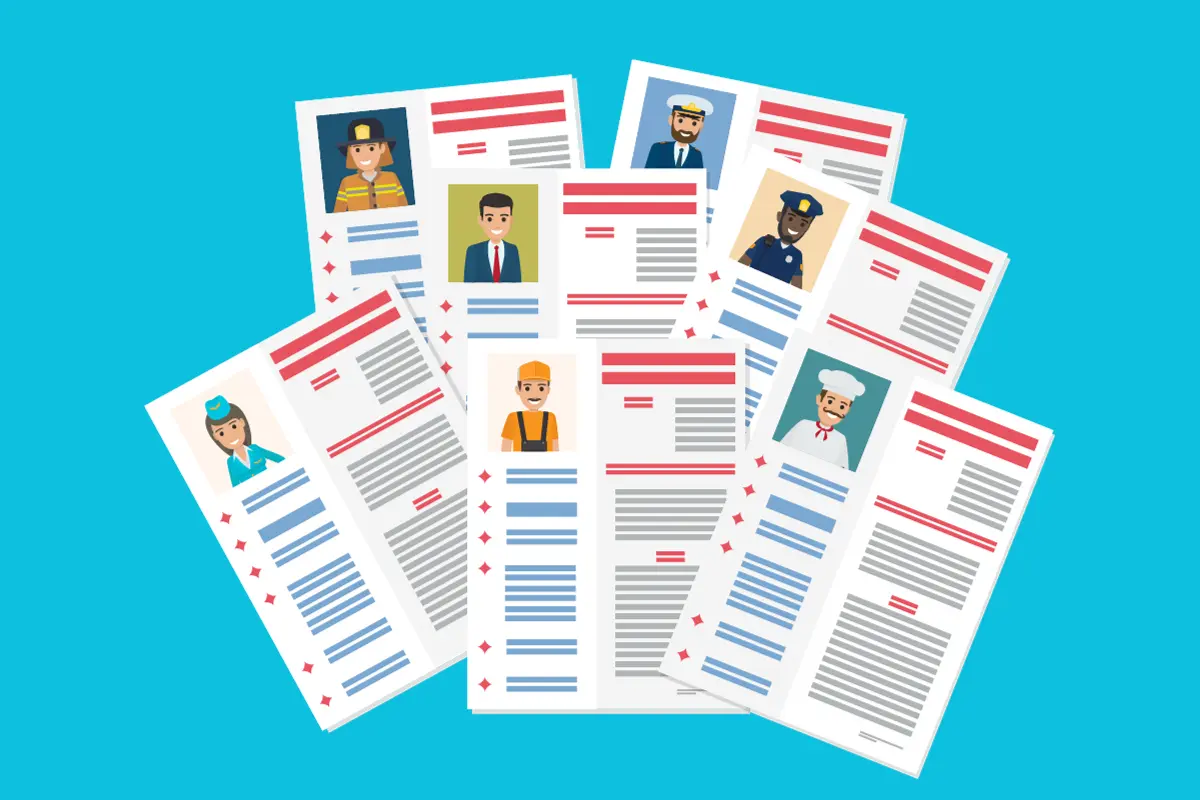How to Write a Biography
Learn how to write a biography with our comprehensive guide.

Zannat Mou
Last updated on Aug 27th, 2024

When you click on affiliate links on QuillMuse.com and make a purchase, you won’t pay a penny more, but we’ll get a small commission—this helps us keep up with publishing valuable content on QuillMuse. Read More.
Table of Contents
How to write a biography can be a fun challenge as you share someone’s life story with readers. You may need to write a biography for a class or decide to write a biography as a personal project. Once you’ve identified the subject of your biography, do your research to learn as much as you can about them. Then, immerse yourself in writing the biography and revising it until it’s best. What I am going to share with you in today’s post is how to write a biography. If you want to know the rules of how to write a biography correctly then this post of ours is essential for you.
Introduction
While it’s true that most biographies involve people in the public eye, sometimes the subject is less well-known. But most of the time, famous or not, the person we’re talking about has an incredible life. Although your students may have a basic understanding of How to write a biography, you should take some time before putting pen to paper to come up with a very clear definition of biography.
Before knowing how to write a biography, let’s first understand what a biography is. A biography is an account of a person’s life written by someone else. Although there is a genre called fictional biography, by definition biographies are mostly non-fiction. In general, biographies trace the subject’s life from early childhood to the present day or until death if the subject is deceased.
Biography writing is not limited to describing the bare facts of a person’s life. Instead of just listing basic details about their upbringing, interests, education, work, relationships, and deaths, a well-written biography should also paint a picture of a person’s personality as well as that person’s life experiences.
How To Write a Biography
1. Ask the subject’s permission to write a biography
Here are the first tips on how to write a biography. Before starting your research, make sure you get your subject’s consent to write their biography. Ask them if they’re ready to be the subject. Getting their permission will make writing a biography much easier and ensure that they are open to information about their lives.
If the theme does not allow you to write a bio, you can choose another theme. If you decide to publish a profile without the subject’s permission, you may be subject to legal action from the subject.
If the topic no longer exists, you don’t need to ask permission to write about them.
2. Research primary sources on the topic
Primary sources may include books, letters, photographs, diaries, newspaper clippings, magazines, Internet articles, magazines, videos, interviews, existing biographies, or autobiographies on the subject. Find these resources in your local library or online. Read as much as you can about the topic and highlight any important information you come across in your sources.
You can create research questions to help you focus your research on this topic, such as:
What do I find interesting about this topic? Why is this topic important to readers?
3. Conduct interviews with subjects and their relatives
Interviewing people will turn your research into reality: the people you interview will be able to tell you stories you can’t find in history books. Interview the subject as well as people close to them, such as spouses, friends, business associates, family members, co-workers, and friends. Interview in person, over the phone, or via email.
For in-person interviews, record them with a voice recorder or voice recorder on your computer or phone. You may need to interview the subject and others multiple times to get the documents you need.
4. Visit places important to the topic
Whenever you want to know how to write a biography, to understand the history of the subject, spend time in places and areas that are significant to the subject. This may be the subject’s childhood home or neighborhood. You can also visit the subject’s workplace and regular meeting places.
You may also want to visit areas where the subject made important decisions or breakthroughs in their life. Being physically present in the area can give you an idea of what your subjects may have felt and help you write about their experiences more effectively.
5. Research the time and place of the subject’s life
Contextualize your subject’s life by observing what’s going on around them. Consider the period in which they grew up as well as the history of the places they lived. Study the economics, politics, and culture of their time. See current events happening where they live or work.
When you studying how to write a biography, ask yourself about time and place:
What were the social norms of this period?
What happened economically and politically?
How has the political and social environment influenced this topic?
6. Make a timeline of a person’s life
To help you organize your research, create a timeline of a person’s entire life, from birth. Draw a long line on a piece of paper and sketch out as many details about a person’s life as possible. Highlight important events or moments on the timeline. Include important dates, locations, and names.
If you think about how to write a biography You can also include historical events or moments that affect the topic in the timeline. For example, a conflict or civil war may occur during a person’s lifetime and affect their life.
7. Focus on important events and milestones
Major events can include marriage, birth, or death during a person’s lifetime. They may also achieve milestones like their first successful business venture or their first civil rights march. Highlights key moments in a person’s life so readers clearly understand what’s important to that person and how they influence the world around them.
For example, you might focus on one person’s achievements in the civil rights movement. You could write an entire section about their contributions and participation in major civil rights marches in their hometowns.
8. Cite all sources used in biography
Most biographies will include information from sources such as books, journal articles, magazines, and interviews. Remember to cite any sources that you directly quote or paraphrase. You can use citations, footnotes, or endnotes. If the biography is for a course, use MLA, APA, or Chicago Style citations according to your instructor’s preference.
9. Reread the biography
Check the biography for spelling, grammar, and punctuation. Circle all punctuation marks in the text to confirm they are correct. Read the text backward to check for spelling and grammar errors.
Having a biography full of spelling, grammar, and punctuation errors can frustrate readers and lead to poor grades if you submit your work to the class.
10. Show your biography to others to get their feedback
It is a momentous step of how to write a biography. Once you have completed your draft biography, show it to your colleagues, friends, teachers, and mentors to get their feedback. Ask them if they have a good understanding of someone’s life and if the biography is easy to read. Be open to feedback so you can improve the biography and make it error-free. Revise profile based on feedback from others. Don’t be afraid to trim or edit your biography to suit your readers’ needs.
11. Use flashbacks
Flashbacks happen when you move from the present to the past. You can start with the present moment, and then bring in a scene from the person’s past. Or you could have one chapter focusing on the present and one focusing on the past, alternating as you go.
The flashback scene must be as detailed and realistic as the present-day scene. Use your research notes and interviews with subjects to better understand their past to reminisce.
For example, you can move from a person’s death in the present to reminiscing about their favorite childhood memory.
12. Outline Your Story Chronologically
This is another important step in how to write a biography is to write an outline that describes your story in chronological order. An outline is a tool that helps you visualize the structure and key elements of your story. This can help you organize your story into chapters and sections.
You can write your plan in a digital document or draw it with pen and paper. Remember to store your outline in an easily accessible place so you can refer to it throughout the writing process.
Need inspiration? Check out these biography examples to see how different types of bios are written for various contexts.
FAQs
What citation style should I use for my biography?
Use MLA, APA, or Chicago Style citations based on your instructor’s preference when citing sources in your biography.
Should I include personal opinions in a biography?
No, a biography should be objective and based on facts. Avoid injecting personal opinions or bias into the narrative.
What’s the difference between a biography and an autobiography?
A biography is written by someone else about a person’s life, while an autobiography is written by the subject themselves about their own life.
Can I write a biography about a living person?
Yes, you can write a biography about a living person with their consent. Ensure you respect their privacy and follow ethical guidelines when writing about them.
Conclusion
Other than creating a sense of closure, there are no set rules about how a biography ends. An author may want to summarize their main points about the subject of their biography. If the person is still alive, the author can inform the reader about their condition or circumstances. If the person has died, inheritance can be discussed. Authors can also remind readers how they can learn from the biographical subject. Sharing a closing quote or about a person can leave the audience with a point to consider or discuss in more detail.
For further insights into writing and to avoid common mistakes, check out our article on Most Common Mistakes in Writing. Additionally, explore the Best Writing Tools for Writers to enhance your writing skills and discover the tools that can assist you. If you’re looking to improve your typing speed and accuracy, our article on How to Type Faster with Accuracy offers valuable tips.
How we've reviewed this article
Our content is thoroughly researched and fact-checked using reputable sources. While we aim for precision, we encourage independent verification for complete confidence.
We keep our articles up-to-date regularly to ensure accuracy and relevance as new information becomes available.
- Current Version
- Aug 27th, 2024
- Oct 22nd, 2023



